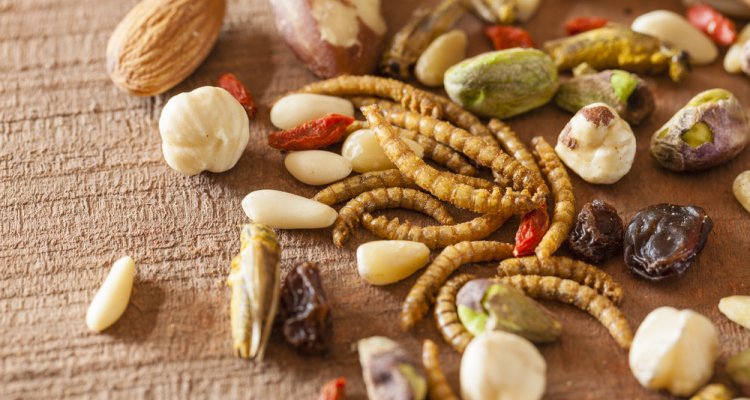
News
A truly sustainable protein transition calls for more than just technological solutions
Meat substitutes on their own are insufficient to achieve the protein transition. But what do we need? For a maximum impact on the environment, diet and food security, policymakers should zoom out more often and look at the bigger picture. What is their aim, and is the goal the same for all stakeholders? How does a policymaker know what decisions have a positive impact on the food system as a whole? To provide policymakers with insight, Wageningen University & Research scientists paint a scenario for the future food system and an overview of the trends in the transition that are overlooked.
‘The protein transition is not a goal, but a means to an end’, Dr Hannah van Zanten underscores. Van Zanten is the interim chairholder at the Farming Systems Ecology Group. ‘The idea of replacing animal proteins with plant proteins, alternative protein sources and a better distribution across the planet, is a way of reaching certain goals. Goals such as a healthier diet, food security and less environmental impact. It is important to keep these goals in mind.’ Van Zanten is one of the two scientists who aim to provide policymakers with insights into the future of the protein transition during the last session of the ‘Protein transition: from pain points to perspective’ campaign on 8 March. ‘The focus is currently on technology to provide consumers with plant-based alternatives. But will that enable us to achieve the goals we want to achieve?’
Van Zanten and Dr Barbara van Mierlo will show policymakers and other interested parties the greater perspective of the protein transition. In order to make sound decisions, a policymaker must not be swayed by day-to-day issues. What are the collective goals the stakeholders wish to achieve, and how?
The food system of the future
‘If we reduce the consumption of animal proteins, what will a sustainable food system look like? How much livestock will we retain, and what crops will we grow?’ To answer these questions, Van Zanten developed the Circular Food System Model. ‘A multitude of factors are interlinked within a food system. Adjustments in one place influence aspects throughout the system.’ The model shows a “dot on the horizon”, as Van Zanten puts it, a redesigning of the food system. ‘In addition to diet, environment and food security, social and ethical questions exist. We are currently working on including these into the model.’
- Unfortunately, your cookie settings do not allow videos to be displayed. - check your settings
With fewer animal proteins being consumed, the livestock population will shrink. What animals will remain and why? ‘In a circular model, we generate as little waste as possible. Hence, the animals in our model barely eat products that are also fit for human consumption but are fed on residue streams: excess nutrients. This makes animals recyclers.’ To determine what animals are to take on this recycling role, it is essential to stay focused on all of the transition’s goals. ‘Dairy cows graze and recycle by-products of the food industry and thus are reasonably efficient producers of milk. However, the chain also produces red meat through veal calves, for example. Red meat can negatively impact a healthy diet and is to be used with caution.’
Another example: insects as a protein source. ‘The consumption of insects will only further our goals if they are produced with sustainable energy and residue streams’, Van Zanten explains. ‘A food systems approach is essential to achieve improvements.’
Three paths towards a protein transition
‘Difficult choices must be made on issues that are taboo’, Barbara van Mierlo explains. She is a sociologist in the Knowledge, Technology and Innovation Group. ‘The focus is currently on developing meat substitutes, and the market is expected to do the rest. That is, however, not enough for a real transition.’ Research, investments and product development focusing on mimicking meat constitute one of the so-called transition pathways that Van Mierlo discusses in her research. ‘In order to achieve a true protein transition, other developments must also be taken seriously. Important issues that are not yet being discussed must be brought to the table, for example, how to reduce the livestock population in the Netherlands.’
The second path Van Mierlo focuses on is veganism. ‘This is a social movement among civilians and chefs who are reconsidering what a healthy, nutritious diet should look like without animal ingredients. Such a lifestyle change is also important for the protein transition.’ Sustainable production is another relevant topic which lies at the core of the third transition pathway: alternative farming systems. ‘This includes all manner of ideas about a radical change in the way we produce food, such as organic, regenerative and circular farming.’
Thinking from a transition perspective
The transition pathways may broaden policymakers’ perspectives. ‘Zoom out, consider the larger picture. Considering society as a whole rather than focusing on partial solutions, such as meat substitutes, is critical’, Van Mierlo stresses. ‘We must learn to think from a transition perspective.’ This means that social scientists must also have a say in the discussion about the protein transition. ‘I call for
transdisciplinary research that involves numerous pieces of the puzzle, illuminates
different dilemmas and includes a variety of perspectives. After all, the protein
transition is a major change in the food system, from production to lifestyle.’
At the start of the last session of this campaign, Sjoukje Heimovaraa, president of WUR’s Executive Board, will launch the book “Our Future Proteins: A Diversity of Perspectives’’. In this book, co-editors Van Zanten and Van Mierlo and their colleagues have collected over fifty different perspectives on the protein transition, including their own. ‘Through this book, we show what different aspects pertain to the transition. Not just technical developments are required, but also social and institutional changes.’